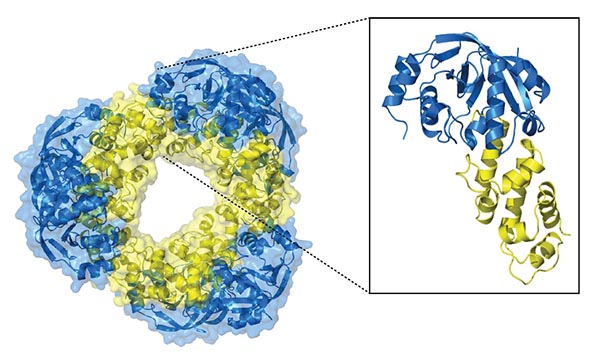
EMBL and Tara: Hamburg
EMBL Hamburg and Tara raise awareness of the risks of microplastic pollution and global infection

Mission Microplastics, the Tara Ocean Foundation’s expedition studying the microplastics entering European waters, recently brought the schooner Tara to the German city of Hamburg and the estuary of the river Elbe. While in Hamburg from 16–19 June 2019, Tara and EMBL Hamburg organised special events including a joint press conference and reception in Hamburg City Hall.
Seasick
One of Tara’s mission objectives is to study the flora and fauna that colonise plastics at sea. Recent research has suggested that microplastics are not just a direct danger for marine life, they can also act as seafaring vessels for adventurous microbes. Among these microbes are pathogens responsible for serious infectious diseases. Carried by ocean currents, these pathogens attached to plastic particles represent an emerging mechanism for global disease transmission. “I’m very interested in this growing area of scientific interest,” says Head of EMBL Hamburg Matthias Wilmanns. “Politically speaking, I think it’s a great idea to focus on the damaging things being done every second by the microplastic pollution entering the ocean.”
EMBL Hamburg
The study of infectious diseases is central to the research carried out at EMBL’s Hamburg Unit. Located on the campus of the Deutsches Elektronen-Synchrotron (DESY), EMBL scientists operate three beamlines at the Petra III synchrotron, one of the biggest and most brilliant storage ring light sources in the world. “For advanced structural biology research, you need X-ray-based methodology,” says Wilmanns. “And for this, you need state of the art synchrotron infrastructure.”
At Petra III, EMBL scientists supervise hundreds of research groups from around Europe and other parts of the world as they study the 3-dimensional structures of proteins and protein complexes of biomedical relevance. Structural biology techniques like X-ray crystallography allow scientists to visualise some of the largest complexes that make up bacteria such as Mycobacterium tuberculosis (Mtb). Mtb is the pathogen responsible for tuberculosis (TB), one of the top ten causes of death worldwide today. These bacteria are notoriously difficult to treat and can remain dormant inside the body for decades before becoming active and causing symptoms.

This research improves our understanding of how deadly pathogenic bacteria function and opens up surprising new ways to battle the infectious diseases they cause. For example, an international collaboration led by the Wilmanns group recently published their research on toxin–antitoxin (TA) complexes in Mtb. The bacterium contains a specific TA system where the toxin, once freed from the antitoxin, causes the cell to degrade its energy supply and die. Their research determined the physical structure of this TA pair in high resolution for the first time.
As is often the case, the structural knowledge gained with this work led directly into the development of medications that take advantage of such potential weaknesses. “With advanced structural biology research, you generate a very rich source of 3-dimensional data that makes drug discovery the logical next step for many projects,” says Wilmanns. “We recently established a public–private partnership project with the biotech company Evotech, centred around using our research on these toxin–antitoxin complexes for drug discovery.”
TB or not TB?
When it comes to deciding which diseases to focus their research on, Wilmanns believes it’s important to remain focused. “If you look at the severity of TB across the globe,” he says, “there is very good justification for continued study.” But studying one disease often leads to insights that translate to others. “Drug resistance, for example, is an ever-increasing challenge, and deepening our understanding of the structural aspects of this phenomenon in TB will hopefully help in the fight against dangerous, drug-resistant hospital pathogens.”

TB is a global challenge, so to fight it, EMBL Hamburg participates in a variety of scientific partnerships. One of these partnerships, the recently founded Centre for Structural Systems Biology (CSSB), operates a shared building in Hamburg where researchers from 10 different research organisations can work under one roof. “Here we have a fantastic source of talented people we can reach out to on a range of highly interdisciplinary and collaborative projects. Members of the CSSB focus on research questions on all types of disease, from viral and bacterial pathogens to tropical parasites.”
For Wilmanns, the next step is to foster cooperation in infection research across all EMBL Units. “We have just finished an exciting kick-off meeting on this in Hamburg with EMBL scientists from Hamburg, Heidelberg, Grenoble and EMBL-EBI participating.”


